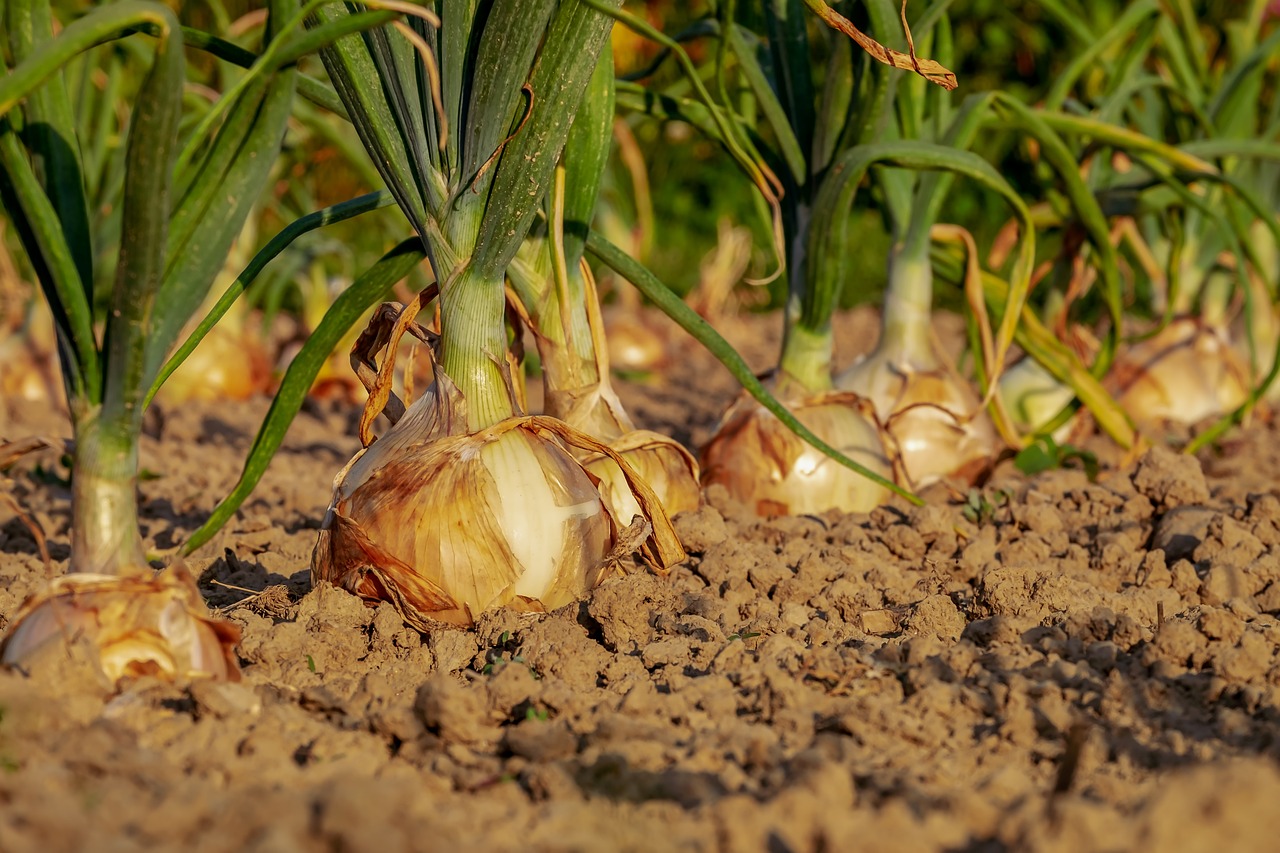Imagine a world where your garden not only feeds you but also enriches the soil, supports local ecosystems, and reduces your environmental impact. This isn’t just a fantasy; it’s the core principle of permaculture. This system of agricultural and social design principles centers around mimicking the patterns and relationships found in natural ecosystems to create sustainable and productive human environments. Let’s delve into the world of permaculture and discover how you can apply its principles to your own life, whether you have a sprawling farm or a small balcony garden.
What is Permaculture?
Permaculture, a portmanteau of “permanent agriculture” and “permanent culture,” is a holistic design system that aims to create sustainable human settlements by integrating ecological principles with ethical considerations. It moves beyond simply growing food and considers the entire system, from energy use and water management to social structures and economic practices. The goal is to create self-sustaining systems that are resilient, productive, and beneficial to both people and the environment.
The Core Principles of Permaculture
At the heart of permaculture lie several core principles that guide its design process. These principles serve as a compass, ensuring that permaculture systems are both ethical and effective.
- Care for the Earth: Recognizing that all living things have intrinsic value and that our actions impact the health of the planet. This principle involves practices like soil conservation, water harvesting, and biodiversity enhancement.
- Care for People: Ensuring that the basic needs of people are met, including access to food, shelter, education, and meaningful work. This involves creating fair and equitable systems that support the well-being of individuals and communities.
- Fair Share: Redistributing surplus resources to support the first two principles and to ensure that everyone has access to what they need. This principle promotes a more just and sustainable society.
The Ethics of Permaculture
These ethical considerations underpin the practical applications of permaculture. They provide a moral framework for decision-making, ensuring that permaculture systems are not only productive but also responsible and equitable.
- Earth Care: This ethic emphasizes the need to protect and restore the Earth’s ecosystems. It encourages practices that minimize pollution, conserve resources, and promote biodiversity.
- People Care: This ethic focuses on meeting the needs of all people, including providing access to food, shelter, healthcare, and education. It encourages the creation of just and equitable social systems.
- Fair Share (or Future Care): This ethic emphasizes the importance of limiting consumption and sharing surplus resources with others, both present and future generations. It encourages a shift towards a more sustainable and equitable economic system.
Key Permaculture Design Principles
Permaculture design is a thoughtful process that involves observing, analyzing, and designing systems that work in harmony with nature. Here are some key design principles that guide the process:
Observe and Interact
Spending time observing the natural patterns and processes of a site is crucial for effective permaculture design. Understand the sun’s path, wind patterns, water flow, and soil types before making any interventions.
- Example: Before planting a fruit tree, observe how sunlight shines on the area throughout the day to ensure optimal growth. Notice where water collects after rainfall to determine drainage needs.
- Actionable Takeaway: Spend at least a full day (or several shorter periods) observing your space before making any design decisions. Take notes on patterns, challenges, and opportunities.
Catch and Store Energy
Capturing and storing energy, whether it’s sunlight, rainwater, or biomass, is essential for creating self-reliant systems. Design systems that collect and store these resources for later use.
- Example: Installing rainwater harvesting tanks to collect rainwater for irrigation. Building a solar greenhouse to extend the growing season.
- Actionable Takeaway: Identify potential sources of energy in your environment and develop strategies for capturing and storing them.
Obtain a Yield
Permaculture systems should be productive, providing food, shelter, and other resources that meet human needs. Design systems that yield multiple benefits.
- Example: Planting a fruit tree that provides food, shade, and habitat for wildlife. Raising chickens that provide eggs, meat, and fertilizer.
- Actionable Takeaway: Design your systems to provide multiple yields, maximizing their efficiency and value.
Apply Self-Regulation and Accept Feedback
Permaculture systems should be designed to be self-regulating, minimizing the need for external inputs. Monitor your systems and make adjustments based on feedback.
- Example: Using companion planting to deter pests and diseases, reducing the need for pesticides. Observing plant growth to determine watering needs.
- Actionable Takeaway: Regularly monitor your systems and make adjustments based on observation and feedback. Embrace adaptability and continuous learning.
Use and Value Renewable Resources and Services
Prioritize the use of renewable resources and services over non-renewable ones. Design systems that rely on natural processes and minimize the use of fossil fuels and other unsustainable inputs.
- Example: Using compost and cover crops to improve soil fertility instead of synthetic fertilizers. Utilizing natural pest control methods instead of chemical pesticides.
- Actionable Takeaway: Identify opportunities to replace non-renewable resources with renewable alternatives. Embrace sustainable practices that minimize your environmental impact.
Produce No Waste
Minimize waste by designing systems that recycle and reuse resources. Turn waste into valuable inputs.
- Example: Composting food scraps and garden waste to create nutrient-rich soil amendment. Using greywater (water from sinks, showers, and laundry) to irrigate non-edible plants.
- Actionable Takeaway: Implement composting and other waste reduction strategies. Seek opportunities to reuse and repurpose materials instead of discarding them.
Design From Patterns to Details
Start with the big picture and then work your way down to the details. Observe patterns in nature and apply them to your design.
- Example: Observing how forests are structured with multiple layers (canopy, understory, groundcover) and applying this concept to your garden design.
- Actionable Takeaway: Observe natural patterns and apply them to your design. Consider the relationships between different elements in your system.
Integrate Rather Than Segregate
Design systems that integrate different elements to create mutually beneficial relationships. Avoid isolating elements from each other.
- Example: Planting nitrogen-fixing plants (like legumes) near plants that require nitrogen. Raising livestock in a pasture that is part of a larger agricultural system.
- Actionable Takeaway: Design systems that create mutually beneficial relationships between different elements. Focus on creating synergies and reducing competition.
Use Small and Slow Solutions
Start small and scale up gradually as you gain experience. Choose solutions that are appropriate for the scale of your project.
- Example: Starting with a small vegetable garden and expanding it over time. Using hand tools instead of heavy machinery whenever possible.
- Actionable Takeaway: Start small and scale up gradually. Choose solutions that are appropriate for the scale of your project and your resources.
Use and Value Diversity
Diversity creates resilience and stability. Design systems that include a wide variety of plants, animals, and other elements.
- Example: Planting a variety of different crops to reduce the risk of crop failure. Raising a mix of different livestock breeds to improve resilience.
- Actionable Takeaway: Plant different crops and include a wide variety of elements to your system.
Use Edges and Value the Marginal
The edges between different ecosystems are often the most productive and diverse areas. Value the marginal and overlooked spaces.
- Example: Creating a pond with a diverse shoreline that provides habitat for a variety of species. Utilizing the edges of your property for planting herbs and flowers.
- Actionable Takeaway: Look for opportunities to utilize edges and marginal spaces. These areas can be highly productive and valuable.
Creatively Use and Respond to Change
Change is inevitable. Be adaptable and responsive to changing conditions. Use change as an opportunity to learn and improve.
- Example: Adapting your planting schedule to account for changes in climate. Adjusting your livestock management practices to respond to changes in pasture conditions.
- Actionable Takeaway: Be adaptable and responsive to change. Use change as an opportunity to learn and improve your system.
Permaculture in Practice: Examples and Applications
Permaculture principles can be applied in a wide range of settings, from urban gardens to large-scale farms. Here are some examples of permaculture in practice:
Forest Gardening
Forest gardening is a permaculture design system that mimics the structure and function of a natural forest ecosystem. It involves planting a diverse mix of trees, shrubs, perennials, and groundcovers that provide food, medicine, and other resources.
- Example: A forest garden might include fruit trees, nut trees, berry bushes, edible herbs, and groundcovers that suppress weeds and improve soil fertility.
- Benefits: Reduced maintenance, increased biodiversity, improved soil health, and increased food production.
Water Harvesting
Water harvesting is the practice of collecting and storing rainwater for later use. It can involve simple techniques like installing rain barrels or more complex systems like building ponds and swales.
- Example: Installing rain barrels to collect rainwater from rooftops. Building swales to capture and infiltrate rainwater into the soil.
- Benefits: Reduced water consumption, improved water quality, and increased resilience to drought.
Animal Integration
Integrating animals into permaculture systems can provide multiple benefits, including pest control, weed control, and fertilization.
- Example: Raising chickens in a garden to control pests and weeds. Using livestock to graze pastures and improve soil fertility.
- Benefits: Reduced reliance on chemical inputs, improved soil health, and increased food production.
Urban Permaculture
Permaculture principles can be applied in urban environments to create sustainable and resilient communities.
- Example: Community gardens, rooftop gardens, and urban farms. Converting lawns into food-producing gardens.
- Benefits: Increased access to fresh food, reduced environmental impact, and improved community cohesion.
Common Permaculture Techniques
Many specific techniques are useful for implementing Permaculture principles. Here are a few common and successful ones.
Sheet Mulching
Also called “lasagna gardening”, this technique builds soil by layering organic materials like cardboard, leaves, and compost. This smothers weeds, retains moisture, and provides nutrients.
Hugelkultur
German for “mound culture,” this technique involves burying woody debris to create raised garden beds. The decaying wood slowly releases nutrients and improves soil structure.
Companion Planting
Planting different species together for mutual benefit. For instance, basil repels tomato hornworms, and beans fix nitrogen for nearby plants.
Keyhole Gardens
These small, circular gardens are designed for easy access to all areas from a central pathway. They are ideal for small spaces and allow efficient watering and harvesting.
Conclusion
Permaculture offers a powerful framework for creating sustainable and resilient human settlements. By integrating ecological principles with ethical considerations, permaculture empowers us to design systems that benefit both people and the environment. Whether you’re a seasoned gardener or just starting out, incorporating permaculture principles into your life can lead to a more sustainable, productive, and fulfilling future. Embrace the opportunity to observe, interact, and design in harmony with nature, and you’ll be well on your way to creating a permaculture paradise. Start small, experiment, and learn from your experiences. The journey towards a more sustainable future starts with each individual action.



